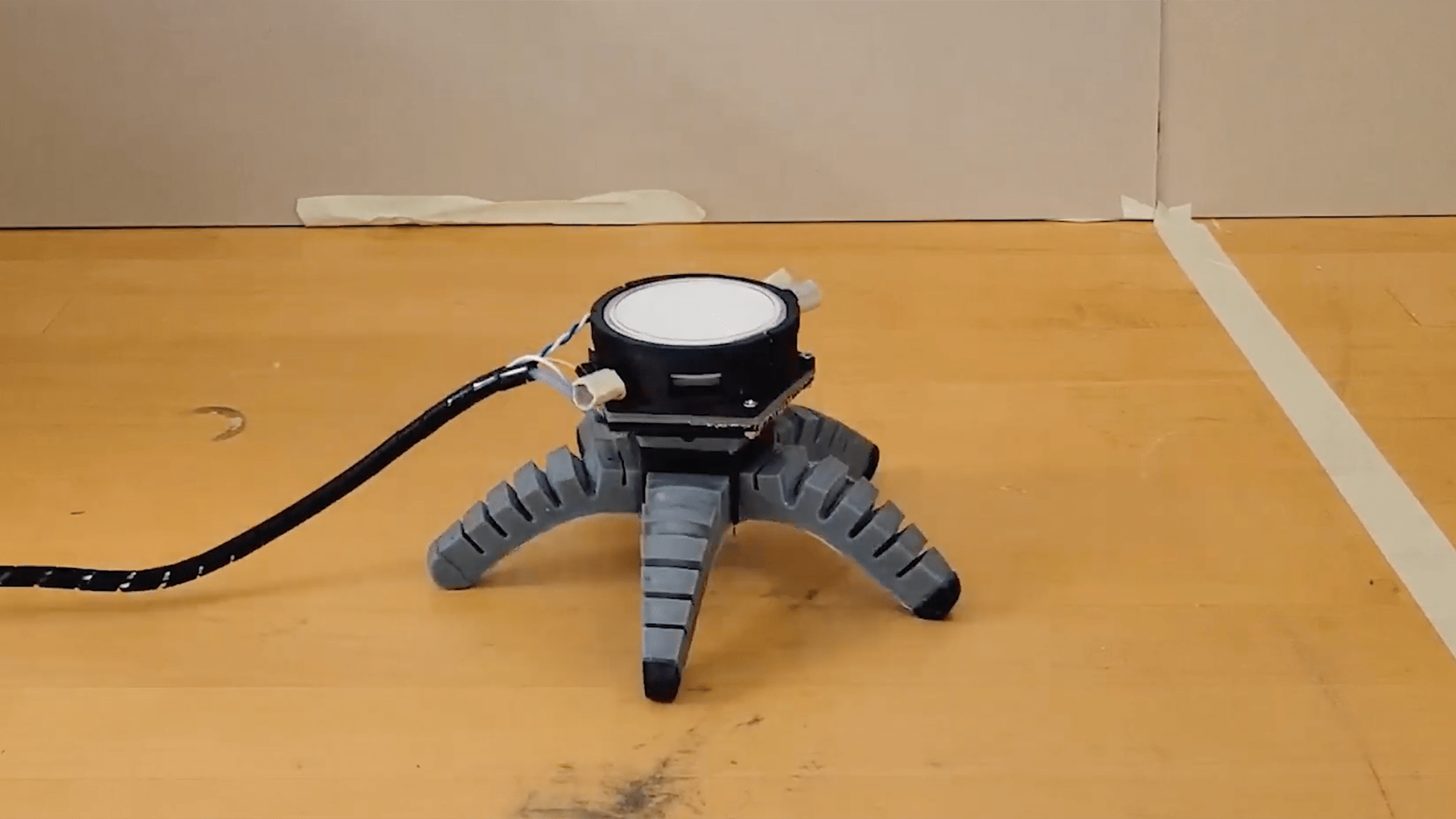Sinister, brain-controlling mushrooms have become are a staple in sci-fi shows and literature. While brainwashed humans doing the bidding of fungi remains fantasy, researchers have now learned how to control a robot’s movement using electrical signals produced by the mycelium of the common King oyster mushroom. This part machine, part fungus robot could one day serve as a building block for more advanced “biohybrid” chimeras that can remotely analyze agricultural fields for potentially harmful changes in soil chemistry.
Researchers from Cornell University and University of Florence in Italy wanted to see if electrical signals pulsing through the mycelium of fungi could be translated into a controlling input for robots. The findings were published last month in the journal Science Robotics. They were ultimately able to create a system capable of analyzing and processing naturally occurring electrical signals sent throughout the mycelium. Those data points were then translated into a “digital control signal” which, when beamed to a pair of robots, caused them to move. The video below shows one of those robots, a soft starfish-like machine, contracting back and forth as a result of researchers flashing the connected fungi with UV light. Many fungi don’t love light exposure.
“This paper is the first of many that will use the fungal kingdom to provide environmental sensing and command signals to robots to improve their levels of autonomy,” Cornell University professor of mechanical and aerospace engineering Rob Shepherd said in a statement. “By growing mycelium into the electronics of a robot, we were able to allow the biohybrid machine to sense and respond to the environment.”
Researches used fungi’s underground
Mycelium are the spiralizing network of underground strains connecting fungi together. Fungi naturally respond to changes in their natural environment, whether that be variations in soil chemistry or increased light exposure, by sending electrophysiological signals through the mycelium. Those electrical signals produce patterns of activity some researchers say resembles neurons, which have served broadly as inspiration for advancements in modern machine learning and robotics.
Though biohybrids have been explored in the past using cultivated animal and plant cells, researchers here chose to zero-in on fungi due to its unique durability. Fungi has been known to survive in extreme cold temperatures and can withstand radiation levels that would kill many plants or animals. That environmental resilience could prove useful in future efforts to deploy biohybrid robots in harsh, unforgiving environments or even space. The King oyster variant in particular was chosen for this study because it’s relatively easy to grow and maintain, the paper notes.
To conduct their tests, these researchers began by cultivating King oyster mushrooms in a lab from a kit bought online. The fungus cells grew in a petri dish for between two and four weeks and were then integrated into a 3D-printed robot scaffolding. An electrical interface created by the researchers accurately read and processed the mycelium electrical activity as it responded to the environment around it.
Fungi, which prefer to grow in dark areas, are particularly sensitive to light exposure. When the researchers shined a UV light on the fungus, it triggered an electrical impulse that quickly sent a signal to the motors and actuators in two custom built robots. In addition to the starfish-like robot above, the researchers also built a second, wheeled version that subsequently moved faster when the fungus responded to light exposure.
Fungi biohybrids could one day remotely monitor soil health
Researchers believe their findings could help produce future robots that are better able to automatically respond to unexpected changes in environments. In theory, fungus biohybrid robots could be released onto crop land to automatically monitor for changes in soil chemistry. In the scenario, the fungus would naturally respond to any contaminant or potential disease affecting the soil by sending an electrical signal. That signal would then be recognized by the robot which could intervene.
“The potential for future robots could be to sense soil chemistry in row crops and decide when to add more fertilizer, for example, perhaps mitigating downstream effects of agriculture like harmful algal blooms,” Shepherd added.
Robot designers often took inspiration from the natural world when creating biohybrids. Engineers have used cells from sea slugs, jellyfish, and rats to create a plethora of simultaneously fascinating and dystopian-looking machines capable of crawling, swimming and walking. Eventually, scientists believe this cornucopia of animal-machine mixtures could be deployed in swarms to remotely monitor coral reefs, forests, or other ecosystems. Once their job is complete, the organic elements of the robot could, in theory, simply be left to biodegrade.

